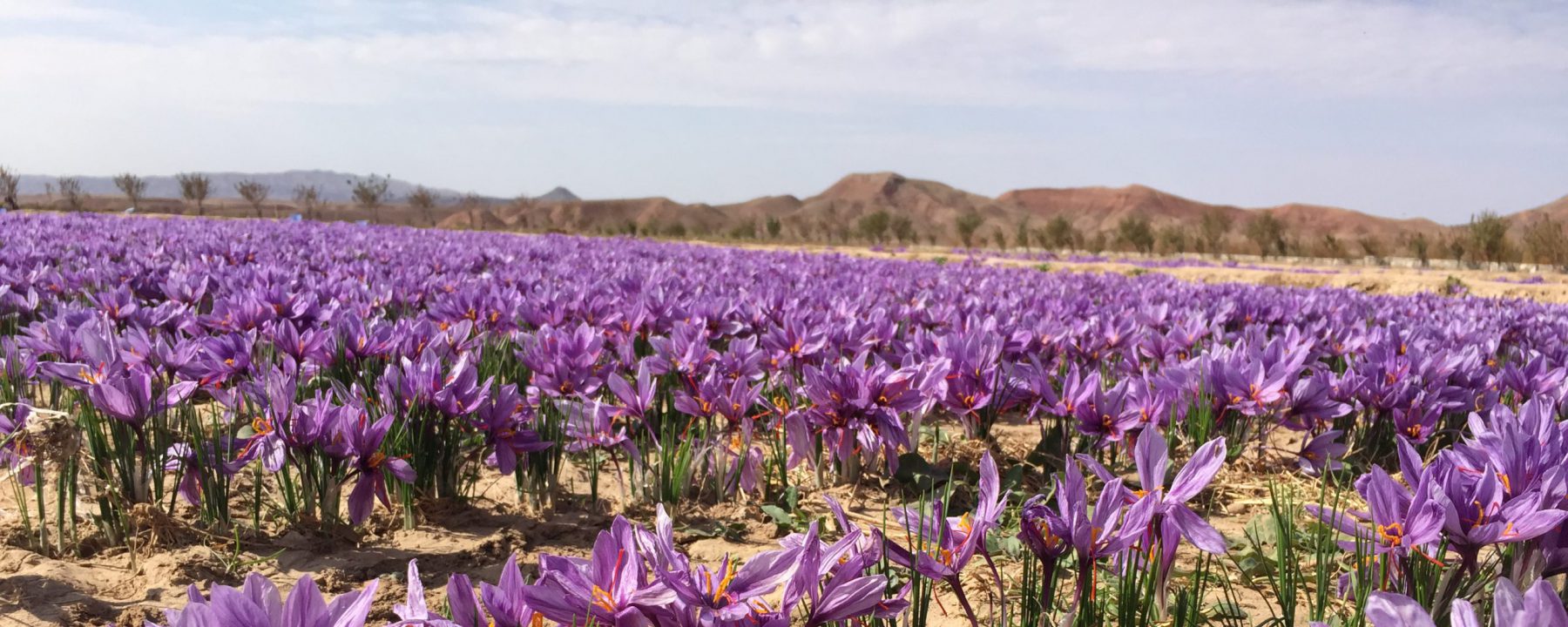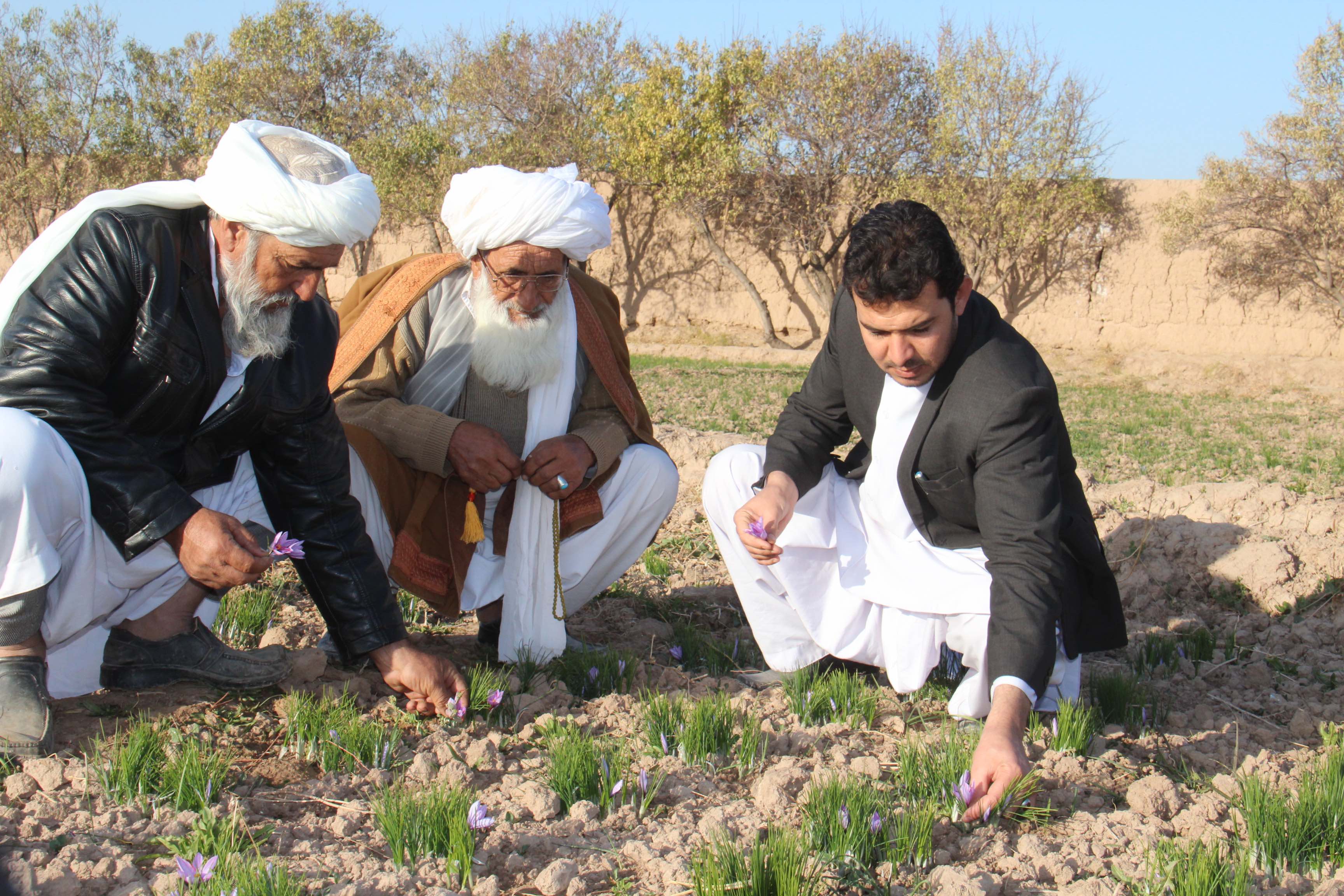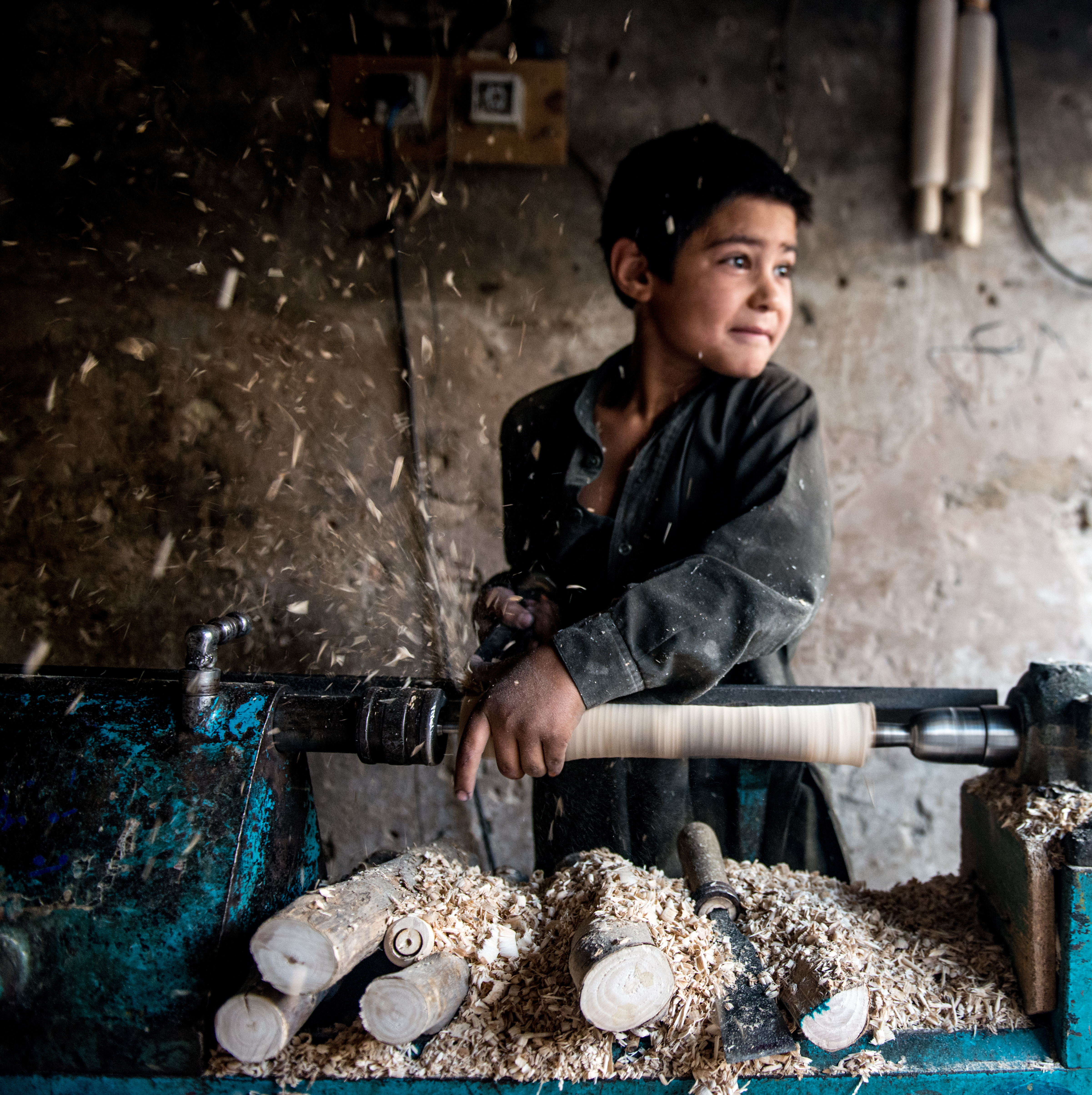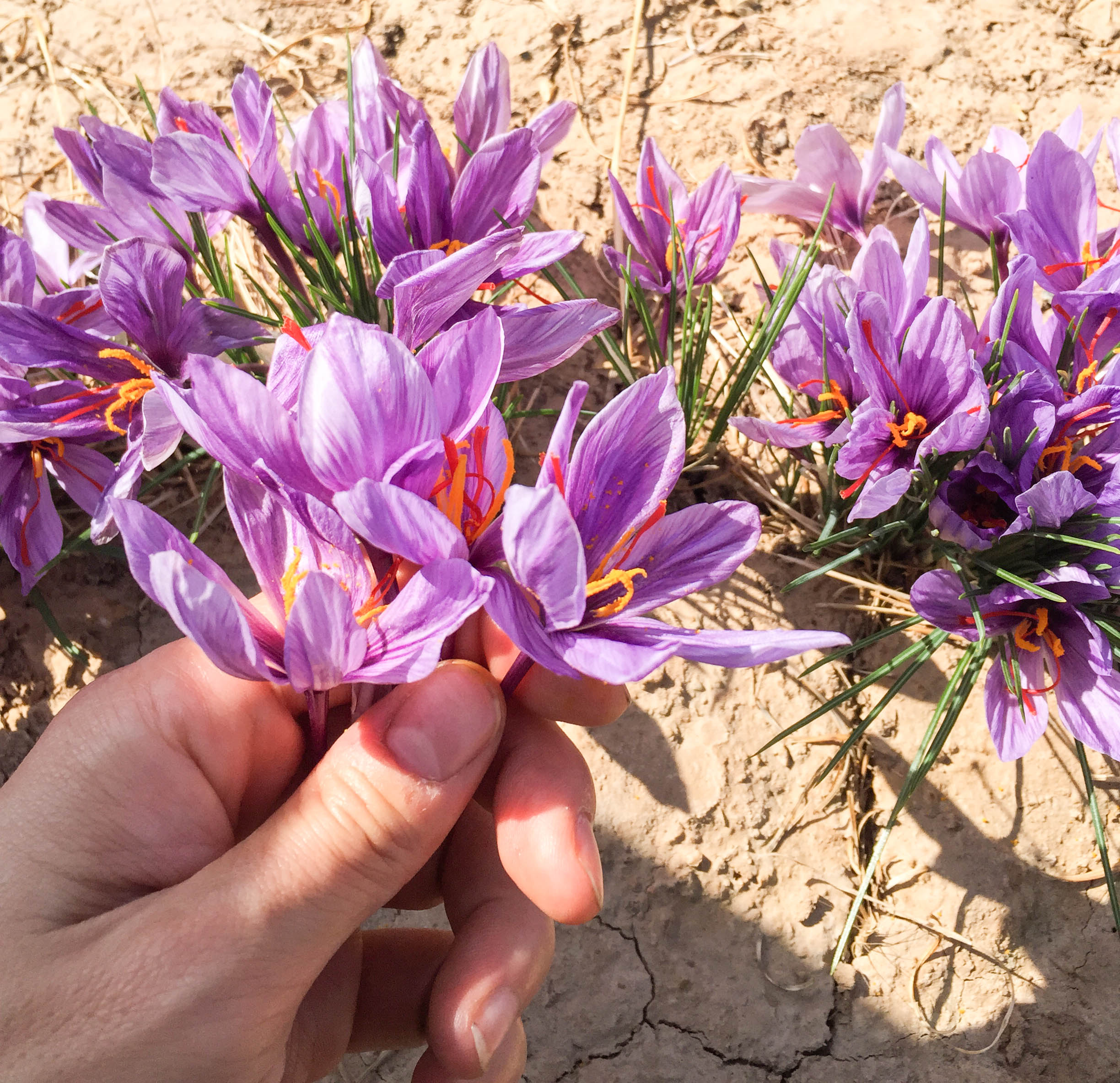Shakoor Ehrarri has always had a passion for agriculture - for the way that plants and earth support an entire livelihood and fuel an economy.

Photo by RUMI
“This year I have started cultivating an additional 2 hectares for soybeans and 2 hectares for saffron,” he tells me that some farmers now grow up to 100 hectares (about .4 square miles) of saffron in Herat. He wants to help the people in his community thrive and to bring recognition to Afghanistan’s hard working, well-deserving farmers.

Shakoor, far right, and two RUMI farmers pick the remaining saffron flowers. Photo by RUMI
Shakoor grew up playing soccer in Herat, where he and his wife now raise their two young children. Shakoor gave me a brief history lesson of Herat, but he informed me “there is over 2,500 years of history,” so we barely skimmed the surface. Herat is the second largest province in Afghanistan, with a population of approximately 2 million people, and a rich history of ancient structures, one of them being the fifth oldest mosque in the world. “There is nothing around the world like these minarets, they are about six hundred years old.” Shakoor also told me about the famous bridge called Pul-e-Malan; legend says the bridge was built in the 1300s by two women who mixed eggshells with clay to fortify the structure. It is clear that Shakoor is extremely proud of Herat and its history.

A photo of a young boy woodworking, captured during RUMI's first trip to Herat. Photo by RUMI
Along with many impressive structural feats, Herat boasts an unrivaled diversity of crops. “It has about 120 kinds of grapes, the best pistachios and the best almonds. They are coveted around the world. We have raisins, cumin, almonds, and as you know the best saffron.” He considers it a gift that Herat farmers don’t use chemical fertilizers to produce high quality saffron. After obtaining a degree in agriculture, Shakoor worked with non-governmental organizations, consulting on the best practices for water use and leading teams that develop the best agricultural practices in Afghanistan. Shakoor met Kimberly Jung and Keith Alaniz, two cofounders of RUMI, while he was working on a consulting project with Sheladia, an international infrastructure development firm, and the Ministry of Energy and Water. “I wanted to work with RUMI for two reasons.” He explains to me that the first reason he wanted to work with the ethical luxury company stems from his own passion for farming practices and his perpetual desire to learn more. He wanted to continue working with others who recognize the value and quality of Afghan goods. The second reason he wanted to work with RUMI was that, “they [RUMI] want to help and encourage the farmers.” Shakoor only wants to be involved with organizations that have Afghanistan’s best interest at heart. It’s clear that he has a perspective on the potential of Afghanistan that the rest of the world is missing. The West sees Afghanistan through a media haze of war, which disrupts our view of its true resilience, rich history and enormous potential. Shakoor is working to change that, one day at a time, one saffron flower at a time. -Reagan

Photo by RUMI

